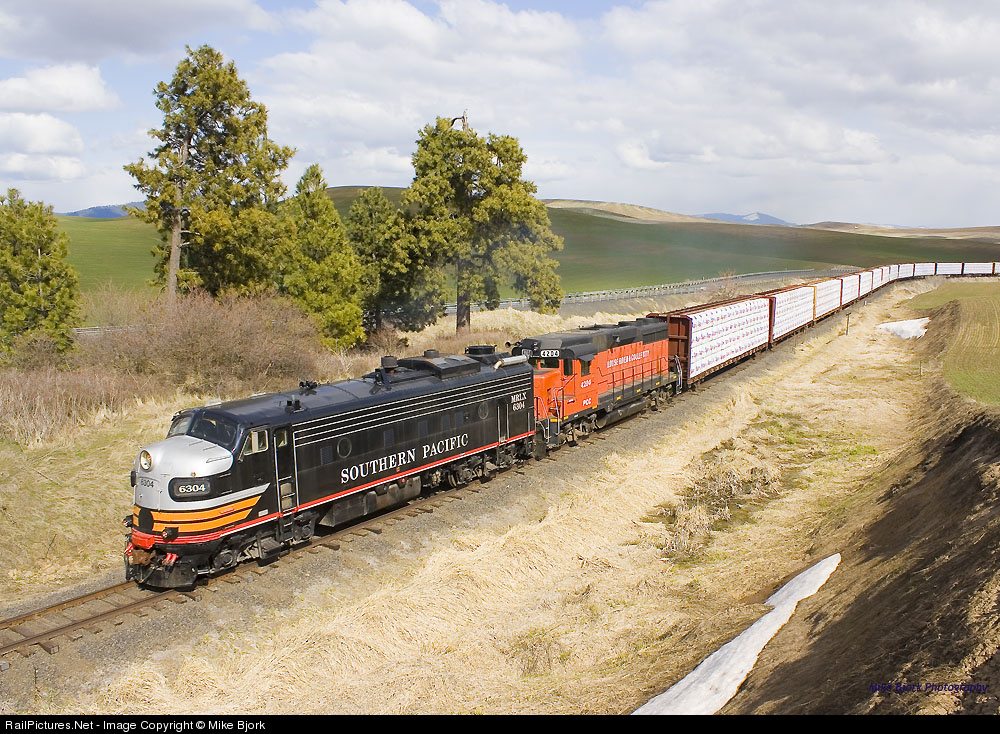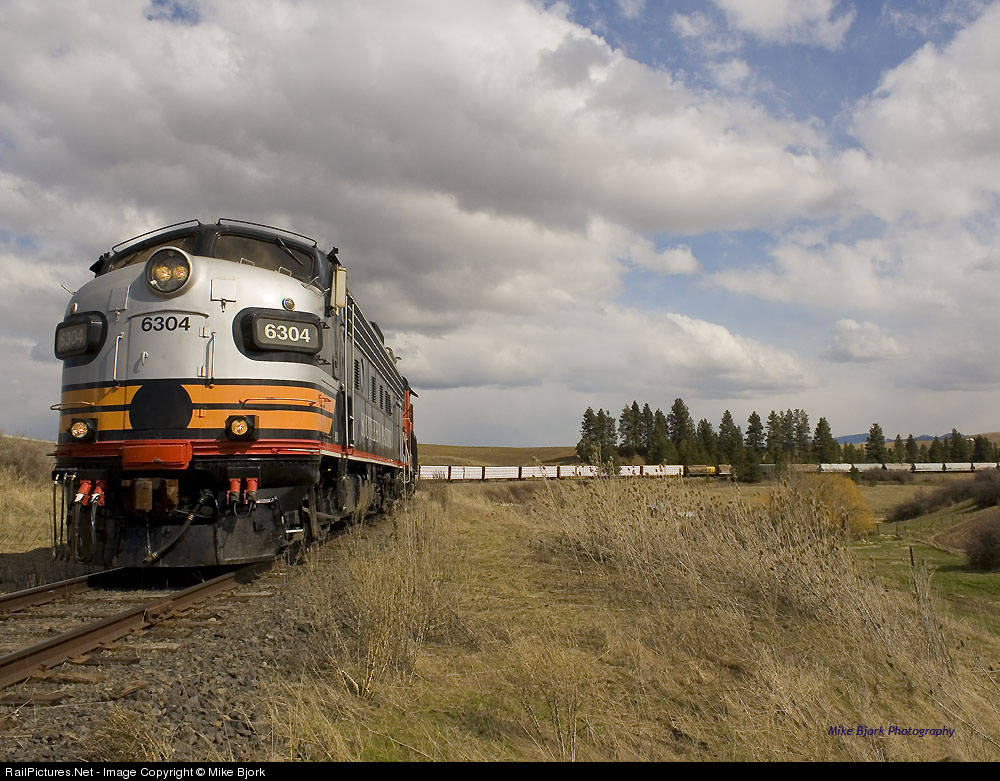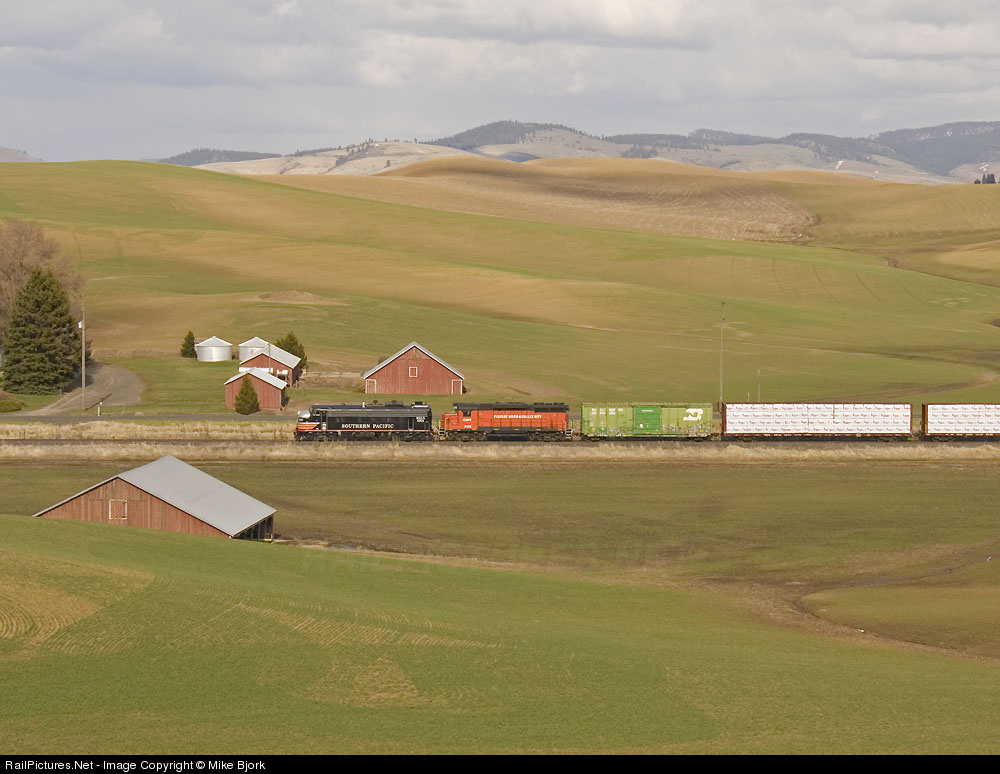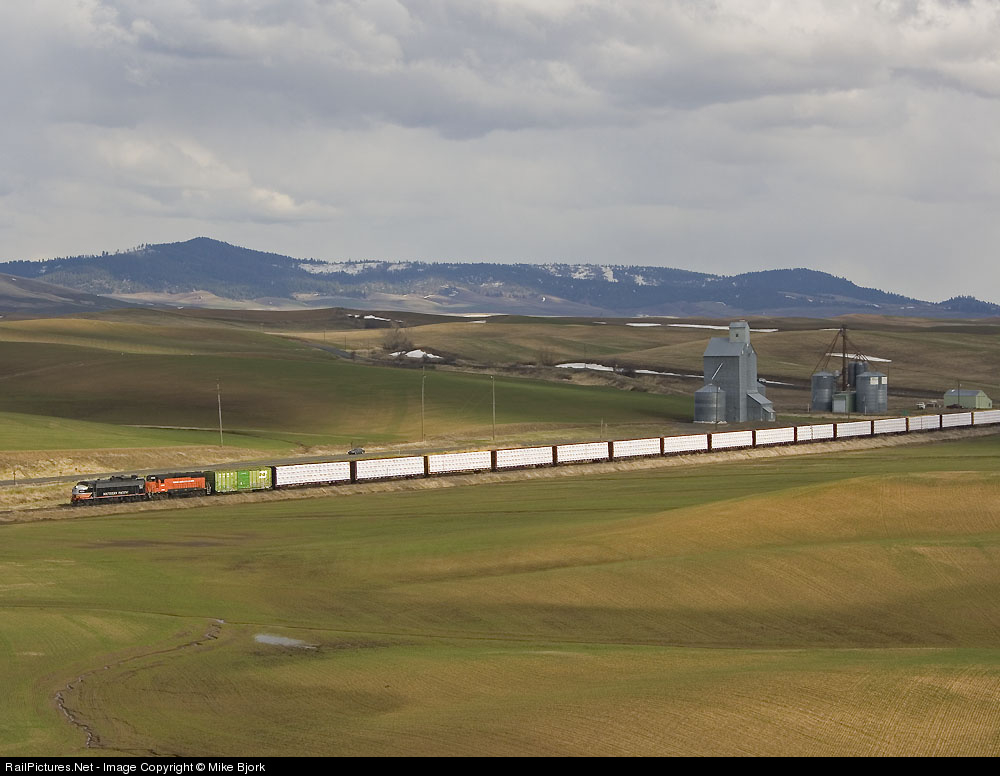I love this branchline. It used to connect with the NP at Palouse WA, and with the MILW at Boville, ID, and hauls lumber and grain. There is a branch that cuts off at Potlach, ID to head south to Moscow, ID and Pullman WA. It seems to be doing quite well for itself. The line is owned by the State of Washington. All photos by Mike Bjork a Civil Engineering student at Washington State University at Pullman, WA.

Two ancient units howl up to the top of the hill outside Palouse on a reasonable day,the highest point on the W&I.

All action has come to a stop near the summit. Some water valve tripped on 6304 and sent the entire train into emergency. A few seconds earlier, 6304 and 4204 were working hard in run-8 to pull its train out of the valley that the city of Palouse lies in.

Its a beautiful, but cold, spring day in the Palouse. A historical unit greets an equally historical homestead. The rolling hills of the fertile Palouse give way to the “Moscow Mountains” in the distance. The Palouse produces, on average, twice as much wheat per acre than anywhere else in the United States. Due to the rolling, steep hills, special combines unique to the Palouse region have to harvest the load when its ready and ripe. Editor’s note. The local gag is that the Palouse Country is the only place in the world where G-d stood the wheat fields on end so the farmer could plant both sides. As a college student, I had the great fortune to work some of those fields, plowing with a D-6 Cat. Sometimes I wasn’t sure whether I was going to stick on the hill or roll to the bottom.

Spring time in the Palouse! The wheat is starting to green our otherwise brown hills. In a few months, the hills will be nothing but bright gold. Bennett Lumber has loaded a record 15 centerbeam cars, a stray BN boxcar heads back to the BNSF, and 14 empty fertilizer hoppers are all in tow.

